Referat Geologie, Mineralogie, Sedimentologie
Paläontology
Information regarding research focus and projects can be found on the section´s webpage.
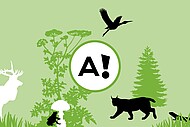
Species knowledge for everyone. The Karlsruhe Taxonomy Initiative
A new project started in autumn 2022: the "Karlsruher Taxonomy Initiative". The aim of the project is to strengthen education in the area of species knowledge and taxonomy of plants, fungi and animals in the region. It is...[more]
Plants, lichens and bryophytes in Baden-Württemberg - taxonomy, distribution and use
Research on native plants i is also a top priority for the Botany team at the SMNK. This work has contributed to scientific research in Baden-Württemberg for decades and is reflected in a large number of extensive...[more]
The Adelegg - flora, vegetation and ethnobotany of a central European mountain landscape
The Adelegg with a altitude of up to 1129 m and an area of 112 km² is a mountain landscape that is mainly wooded today. Parts of the Adelegg mountain ridge belong to the 6.4 km² Adelegg fauna-flora habitat area (FFH no....[more]
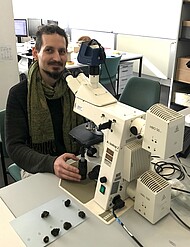
Monitoring und wissenschaftliche Auswertung von Biodiversität (Pilze) in den Schlossgärten Schwetzingen, Rastatt-Favorite und Weikersheim
In dem mykologischen Projekt in Kooperation mit Staatliche Schlösser und Gärten Baden-Württemberg (SSG), das wissenschaftlich von Dr. Markus Scholler vom SMNK geleitet wird, werden 200 ausgewählte Parkbäume (60 Arten) auf ihre...[more]
Medicinal Plants and Herbal Food Ingredients in the 21st Century - Benefits and Safety
The global inventory of plant diversity consists currently of about 350,000 species, with most current estimates expecting around 420,000 plant species to exist. This tremendous diversity accounts for a wide range of...[more]
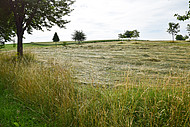
Stadt.Wiesen.Mensch
Ein Projekt der Forschungsabteilungen und der Vermittlung am Staatlichen Museum für Naturkunde Karlsruhe[more]

EDAPHOBASE - a soil organism data warehouse
In the second project phase the non-commercial database Edaphobase will be integrated in the Global Biodiversity Information Facility (GBIF) network with a node for soil organisms at the Senckenberg Museum in Görlitz. Data on...[more]
Large wandering spiders in Amazonian forests
Since 1992 Thierry Gasnier, Hubert Höfer and Antonio Brescovit (and others) study biology and ecology of the large wandering spiders living on the ground of Amazonian forests. Starting point of their interest in factors and...[more]
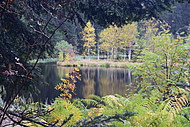
Inventarisierung der Spinnenfauna des Nationalparks Schwarzwald
inklusive gemeinsames Datenmanagement[more]

Semantic enrichment and mobilization of data in distributed repositories for taxonomy and ecology
Solving a Gordian knot in the taxonomy of neotropical jumping spiders and trait-based ecological habitat assessment with spider assemblages[more]
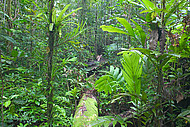
Weevils of the Papuan Region
New Guinea and its lesser surrounding islands harbour an extremely diverse yet little-explored weevil fauna (Curculionoidea). It is characterized by endemism on different hierarchic scales: most species occupy restricted areas...[more]
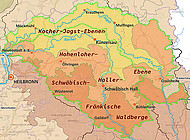
Bläulinge an Jagst und Kocher: Verbreitung, Ökologie, Schutz
In einem faunistisch bisher nur wenig untersuchten Gebiet, dem Bereich von Jagst und Kocher im Nordosten Baden-Württembergs, wurden zehn gefährdete Bläulingsarten im Hinblick auf ihre Verbreitung und ihre regionalen...[more]
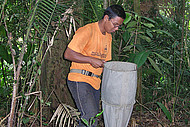
Biodiversity of leaf litter inhabiting arthropods of natural forests in Java
Java is the most densely populated island of Indonesia with about 127 million inhabitants. So, it can not be a surprise that wide areas have been deforested and converted into agricultural land. However, many of the mountains and...[more]
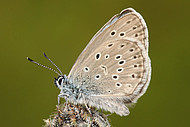
Schutzkonzepte für zwei obligat myrmekophile Schmetterlingsarten
Das Projekt befasst sich mit Bläulingen, deren Vorkommen in Baden-Württemberg stark bedroht sind und die im Raupenstadium besonders enge Beziehungen zu Ameisen eingehen (Myrmekophilie). Dabei wird vor allem die Lebensweise der...[more]
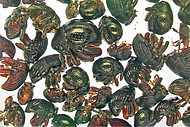
Systematics and evolution of the weevil genus Trigonopterus
The flightless weevil genus Trigonopterus Fauvel (Coleoptera, Curculionidae, Cryptorhynchinae) is extremely diverse in New Guinea, New Caledonia and the Pacific Islands. Currently, there exist 444 described species worldwide, but...[more]






